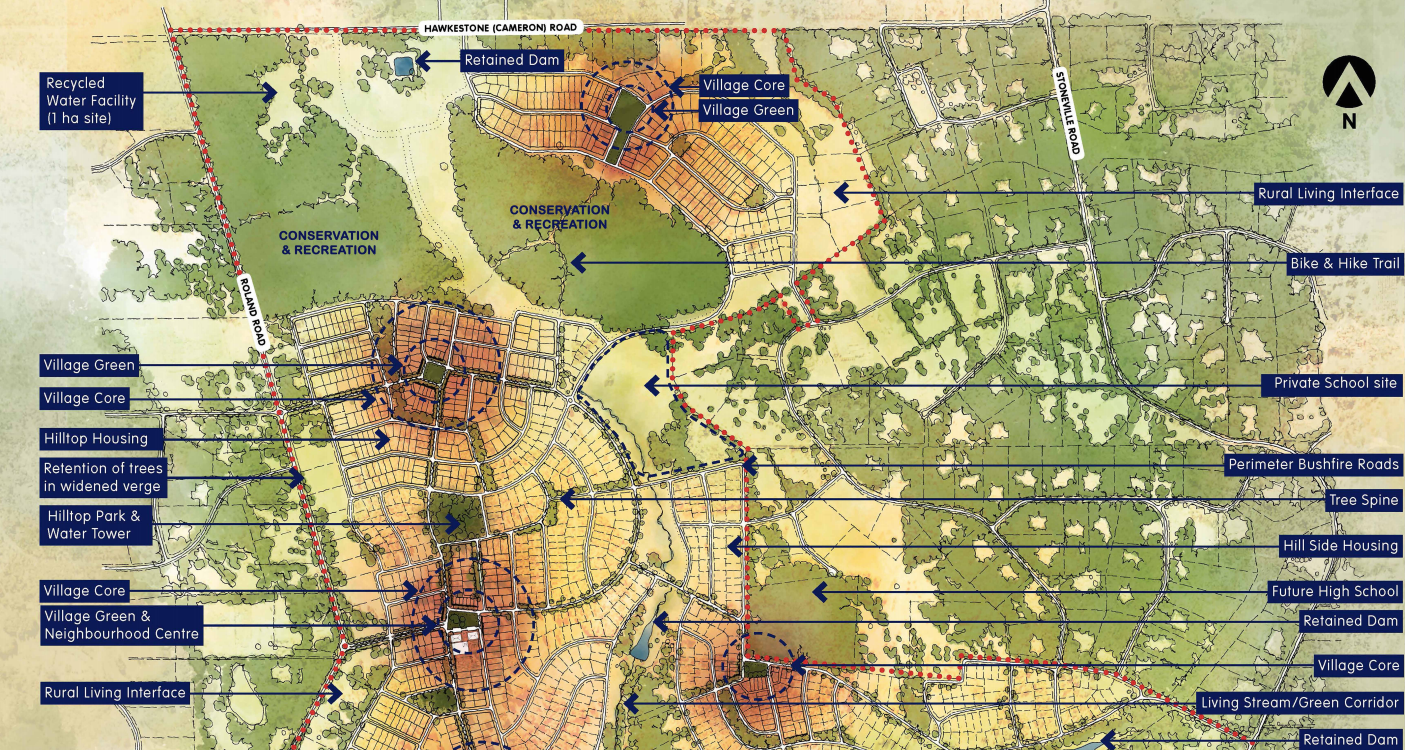North Stoneville Development: A proposed community hub or environmental disaster?

Fertile, green, fresh, quiet. This describes the current state of North Stoneville.
Located east of Perth in the Shire of Mundaring, North Stoneville is an idyllic strip of the hills. It’s home to 555 hectares of flora and fauna, including endangered native species. It borders the rural town of Stoneville that houses a small community of 2,500 people.
However, this is threatening to change.
There is a long-standing battle going on between Satterley, the Shire of Mundaring and conservation groups.
Satterley is Australia’s largest private residential developer who are vying to develop the North Stoneville location into a future residential community. Satterley first began researching this idea in January 2017, and in July 2020, their proposal was rejected by the West Australian Planning Commission.
Satterley aims to build 1,410 lots for a resident population of 3,948 people, a primary school and a private high school, as well as commercial and retail space. It also proposes a wastewater treatment plan, leaving only 100 hectares in environmental conservation space.
Georgia Cameron, the National Communication Manager for Satterley, thinks there are significant economic benefits and stimulus with the development of the estate.
“The development will create over $550 million in economic activity. There will be hundreds of jobs both during the estate’s construction phase as well as post-completion," Cameron said.
So, if Satterley is committed to seeing a community become a reality and there are genuine benefits to the proposal, why was it rejected?
The Shire of Mundaring did not have a comment to this question, instead, their Special Council Meeting speaks for itself.
The reasons include threat to the public’s safety and disastrous environmental impacts. The traditional owners of the land had not been consulted about the proposal, and local experts were in agreeance with the Council.
While Satterley’s proposal has been rejected, the fight for the land is far from over. A war is waging between Satterley and an activist group Save Perth Hills.
Save Perth Hills are completely against any development taking place in North Stoneville, citing the numerous impacts as reason to drop the case completely.
Dwayne Scook, a committee member for the group, said the site “is quickly becoming a rare habitat for species, such as three species of black cockatoos”.
Scook said Satterley “intends to clear 181 hectares of the existing forest”. This is detrimental not only to the wildlife and fauna, but it can spread to John Forrest National Park, and it “would definitely be within the foraging range of other endangered species, such as the chuditch,” Scook said.
Environmental impacts galore. The effects do not stop there, however. Both the Shire and the group agree the development would have irreversible impacts on the Jane Brook and Susannah Brook Catchments. Scook claims the “non-nutrient contaminants, such as pharmaceuticals and heavy metals, will be released and have residual effects in the soil, surface and groundwater”.
Satterley’s persistence does not seem to be popular within the community either. Over 2000 people support Save Perth Hills Facebook page and there have been numerous protests and fundraisers, supported by local businesses, to stop the development.
Scook often campaigns with community members, where he believes “the overall feeling of the community is that the development is not acceptable”. He also said when the original meeting took place, 1,200 public attendees were there in opposition to the proposal.
With heavy opposition to the proposal and numerous environmental impacts, fire danger is on the list as one of the biggest risks in North Stoneville. Fires ravaged our bushland across Australia last year and many are still suffering the impacts. North Stoneville is located within an extreme risk fire zone and the Shire has found that Satterley has not provided an adequate Management Plan for this. Scook backs up their findings, saying that “between poor visibility, ember attacks up to six km, and traffic congestion, which would include movement on stock, it’s a recipe for disaster”.
The rejection to Satterley’s proposal has only made their goal for approval that much stronger, as they’re continuing to make their next proposal watertight. Cameron says that “Satterley will continue to consult with all relevant stakeholders to address feedback and ensure the plan complies with relevant federal, state and local government policy frameworks”. She also says that “Satterley is committed to ensuring the proposed North Stoneville townsite meets the needs of the existing Hills community and future residents”.
So, where does this leave North Stoneville? Currently, it is safe to stay the way it is. However, Satterley is eager to see the development commence. Said development will have detrimental environmental, societal and community impacts that should be considered thoroughly before commencement.
Scook also urges Satterley to reconsider, saying that we now have a better understanding of biodiversity and climate change than when the site was initially considered over two decades ago. Interestingly, Scook finishes with saying “the landowner, who are the Anglican Church, and the developer [Satterly] believe it is acceptable, which is usually in contradiction to the church’s marks of mission”.
The fight for the land rights continue.
Post a comment